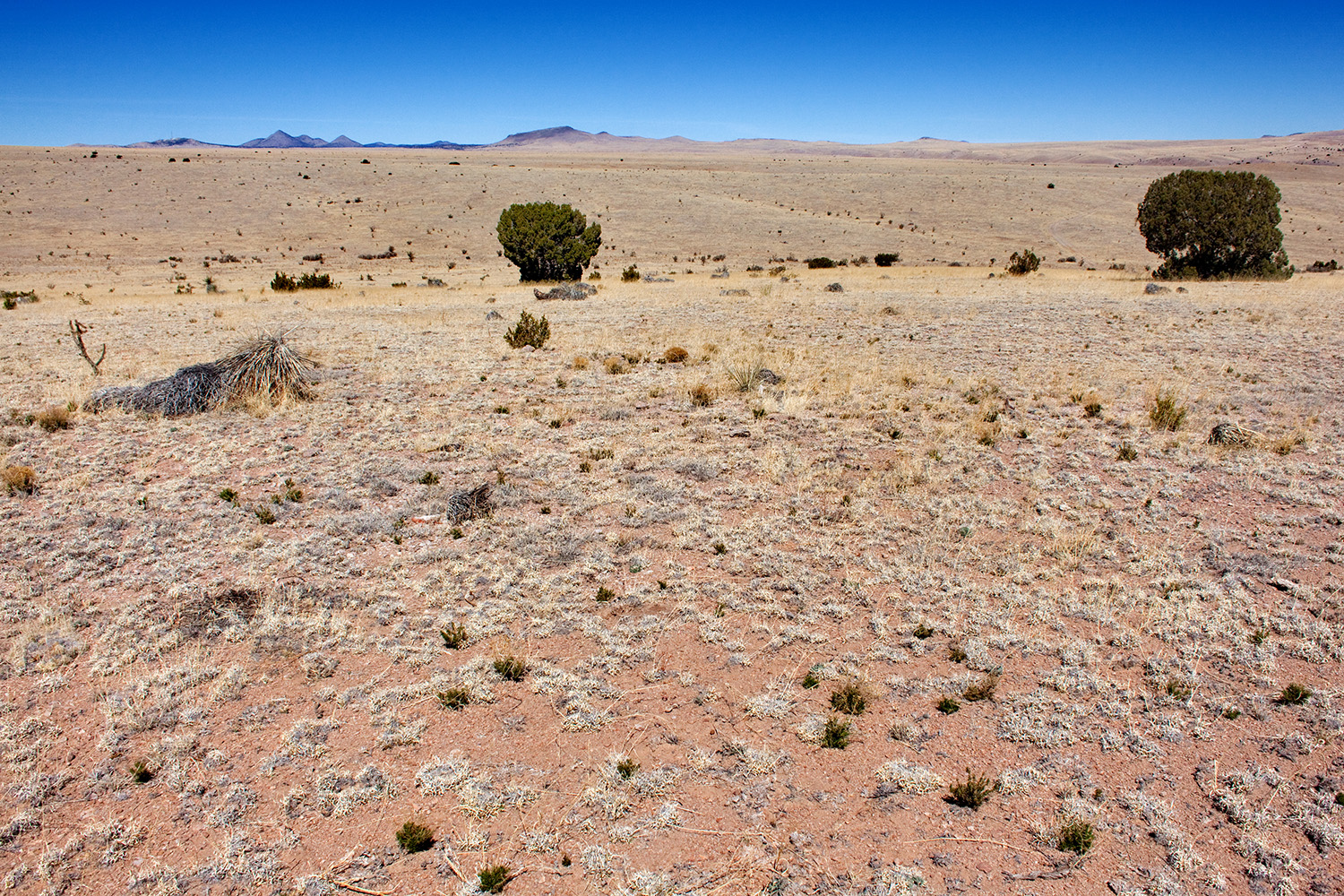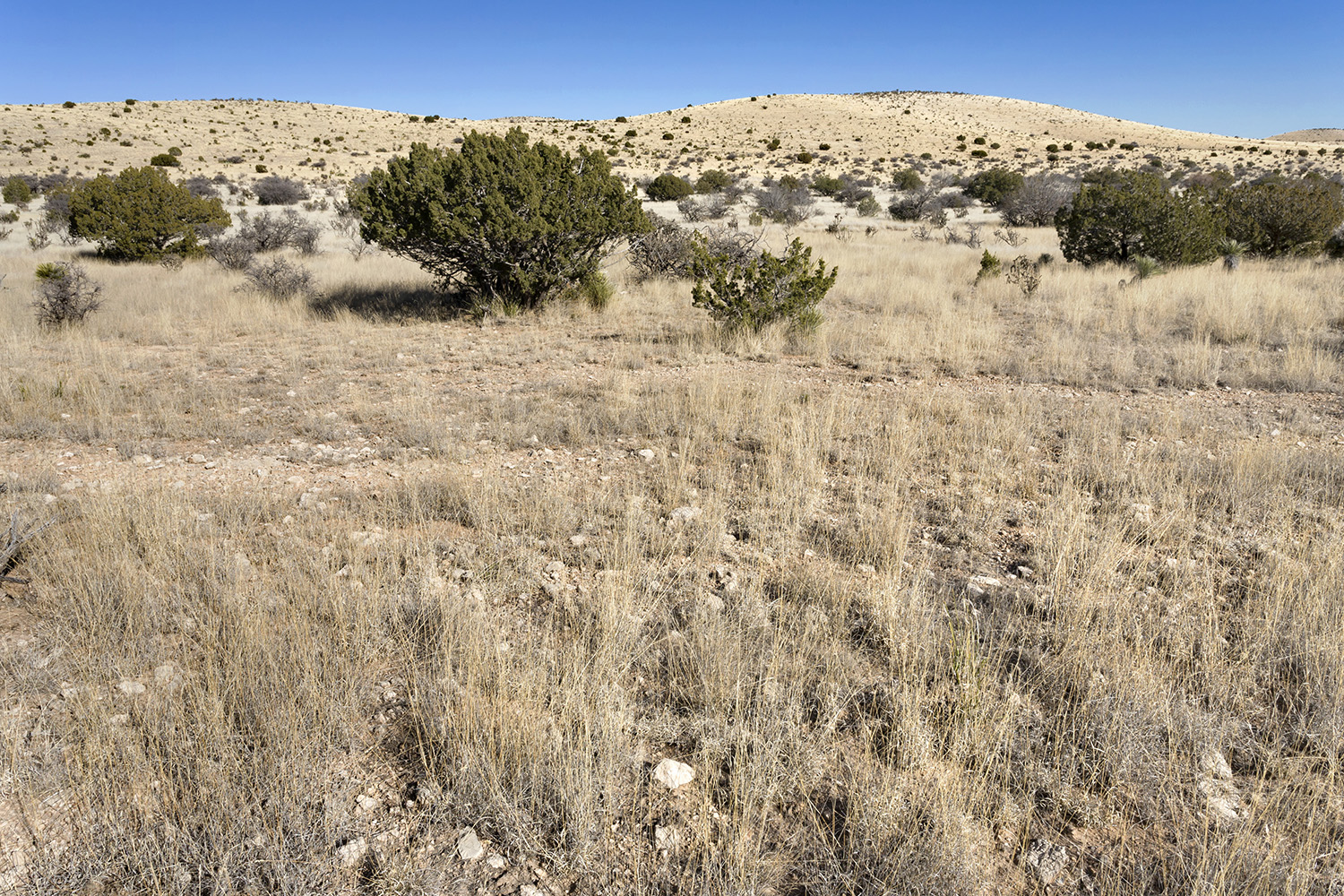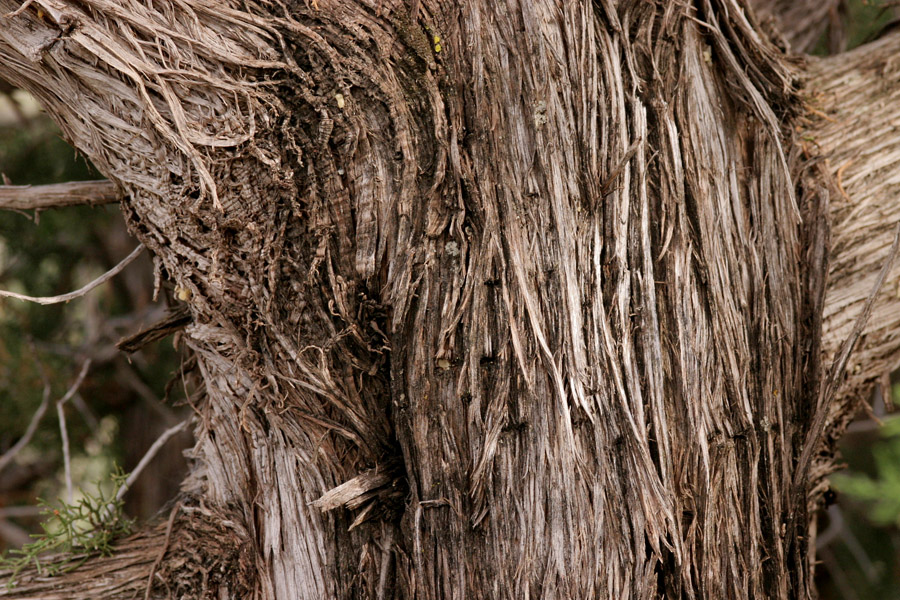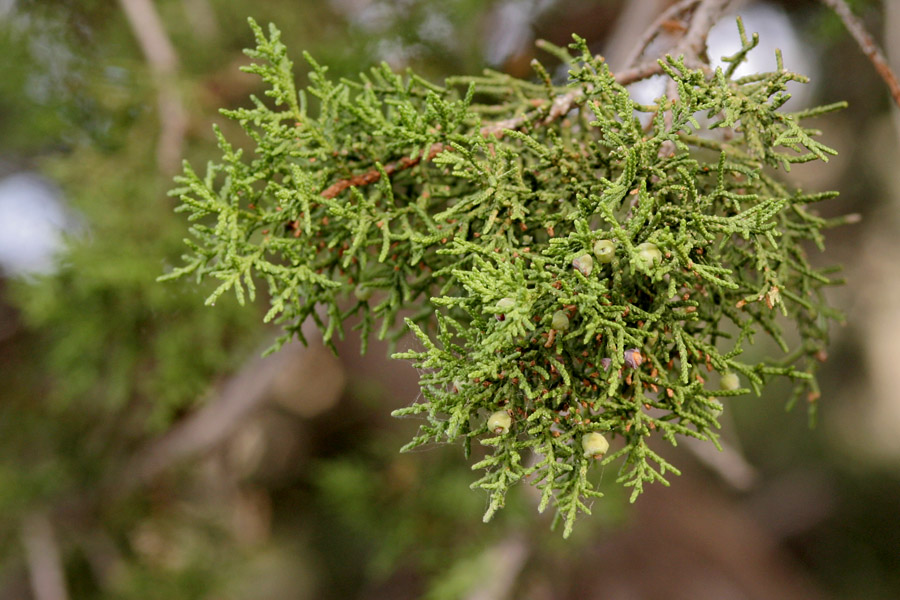Selected Plants of Navajo Rangelands
Juniper
Gad

Juniper of several species grow on the Navajo Nation. They are small, native, evergreen trees growing up to 40 feet, often with an irregular crown. The occur in mixed or pure stands of open scrub woodland at elevations of 5,000 to 7,500 feet, often on dry, rocky ridges but also in canyons or on middle-elevation foothills.
Juniper does well in cultivation, is adapted to a wide range of soils and moisture conditions, and is winter hardy, slow growing, and very long lived.
Piñon-juniper woodlands provide good habitat for mule deer, bighorn sheep, bison, wild horses, pronghorns, coyotes, bobcats, badgers, porcupines, rabbits, mice, voles, woodrats, squirrels, and numerous birds. Juniper foliage and berries provide food for many species of birds and mammals, including humans.
Across the West, junipers have expanded their historical range in the years since European settlement, especially into sagebrush-grass communities below areas of traditional piñon-juniper. Overgrazing, fire suppression, and climatic change have been identified as potential causes of juniper invasion. In the absence of fire or other disturbances, trees eventually dominate a site and crowd out herbaceous and shrub species.
Species found on the Navajo Nation include:
- Juniperus scopularum (Rocky Mountain juniper)
- Juniperus monosperma (one-seed juniper)
- Juniperus osterosperma (Utah juniper)



Copyright 2018 New Mexico State University. Individual photographers retain all rights to their images. Partially funded by the Western Sustainable Agriculture Research and Education Program (westernsare.org; 435.797.2257), project EW15-023. Programs and projects supported by Western SARE are equally open to all people. NMSU is an equal opportunity/affirmative action educator and employer.
NMSU does not discriminate on the basis of age, ancestry, color, disability, gender identity, genetic information, national origin, race, religion, retaliation, serious medical condition, sex (including pregnancy), sexual orientation, spousal affiliation or protected veteran status in its programs and activities as required by equal opportunity/affirmative action regulations and laws and university policy and rules. For more information please read the NMSU Notice of Non-discrimination.

